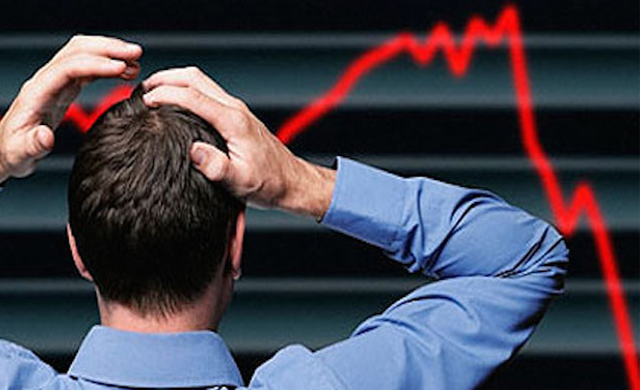I want to understand more about the changes that occur in market manias, and how manias can move to panic, and finally a crash. To assist with my education I’ll write out the key points from a world famous book on the subject written by Kindleberger and Aliber, K&A.

First, an overview of crises (what happens in a typical crisis?)
The economist Hyman Minsky observed that the supply of credit was pro-cyclical – when the economy is booming banks and other lenders become much more willing to lend, when it is in a recession they pull in their horns and become very reluctant to advance loans.
Similarly, investors in real estate or securities become increasingly optimistic as the economy expands about their potential returns; they become more willing to borrow to invest.
There is usually a simple story to help generate optimism, e.g. the new economic era in the US in 1999, the East Asian miracle in the mid-1990s.
When the economy slows share investors become more pessimistic, alongside the lenders, and so are less eager to engage in debt finance.
This pro-cyclicality leads to fragility. Investors who expected that large increases in the prices of their investments would greatly out-weigh the cost of the interest borrowed to invest in them, suddenly find they are wrong when the economy grows less fast. Later, many become distressed sellers as they observe property and security prices declining.
Bubble
A bubble is defined by K&A as “increases in the prices of securities or currencies in the mania phase of the cycle that cannot be explained by changes in the economic fundamentals…A bubble involves the purchase of an asset, usually real estate or a security, in anticipation that the asset or security can be sold to someone else at an even higher price: the term ‘the greater fool’ has been used to suggest the last buyer was always counting on finding someone else to who the stock or the condo apartment or the baseball cards could be sold.”
The mania element comes in when the bubble reaches the “frenzied pattern of purchases” with higher volumes and people very keen to buy before prices rise yet higher.
Stimulus for the boom
This varies. Here are some examples.
- USA in 1920s: optimism about automobiles, highways, telephones and electrification.
- Japan 1980s: financial liberalisation, repatriation of money, increased supply of credit particularly for property loans.
- Nordic countries in 1980s: financial liberalisation, domestic banks allowed to borrow abroad
- East Asian countries in 1997/8: optimism about shares in “Dragon Economies” or “Asian Tigers”. Money came from mutual and pension funds in developed countries as well as locally.
- USA 1995-9: New technology and rising profits, availability of venture capital funding.
- USA 2002-7: Securitization of mortgages increased volume of loans, money from abroad.
- Iceland 2000-7: Bank privatisation led to them borrowing from foreign banks to lend to domestic households and companies.
The increase in investment leads to faster economic growth. Quickening economic growth, in turn, leads to additional investment in a feedback loop.
In all cases there is a surge in cross-border investment flows, leading to higher prices for currency, property and securities. Indebtedness of a group of borrowers increases at a pace 2-3 times that of the interest rate.
While the large increases of indebtedness continues the borrowers have an impeccable record for paying interest on time. “Eventually one or several of the lenders became more cautious because the borrowers’ indebtedness was increasing too rapidly relative to their incomes. …….. The ‘day of reckoning’ occurs when…………………………………………………………….To read the rest of this article, and more like it, subscribe to my premium newsletter Deep Value Shares – click here http://newsletters.advfn.com/deepvalueshares/subscribe-1

 Hot Features
Hot Features












